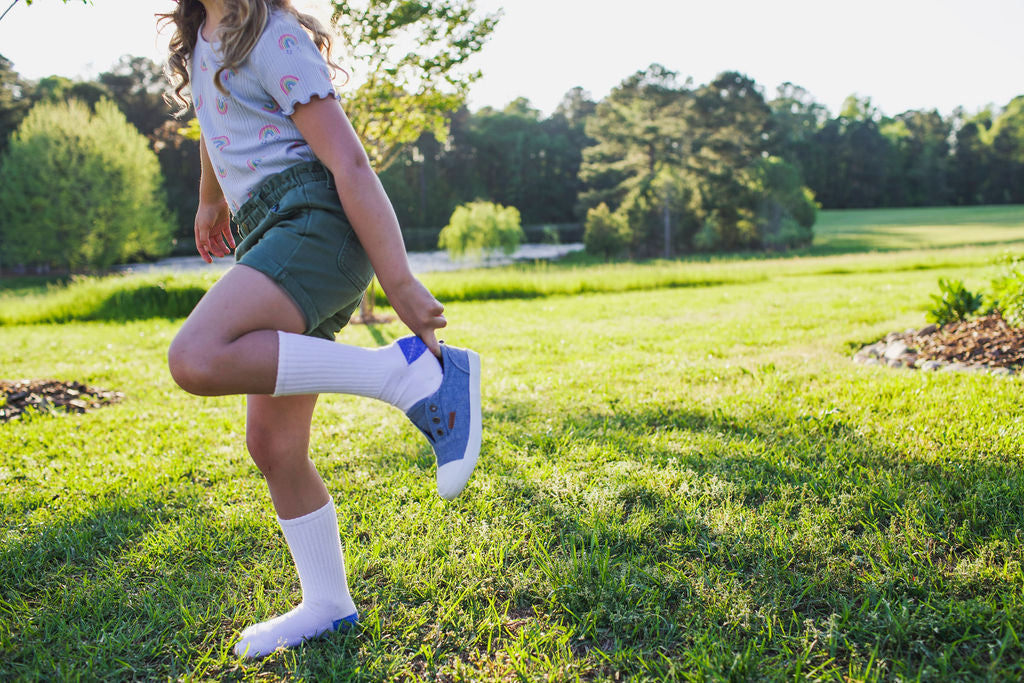
On a mission to keep kids safe from ticks, one pair of socks at a time.
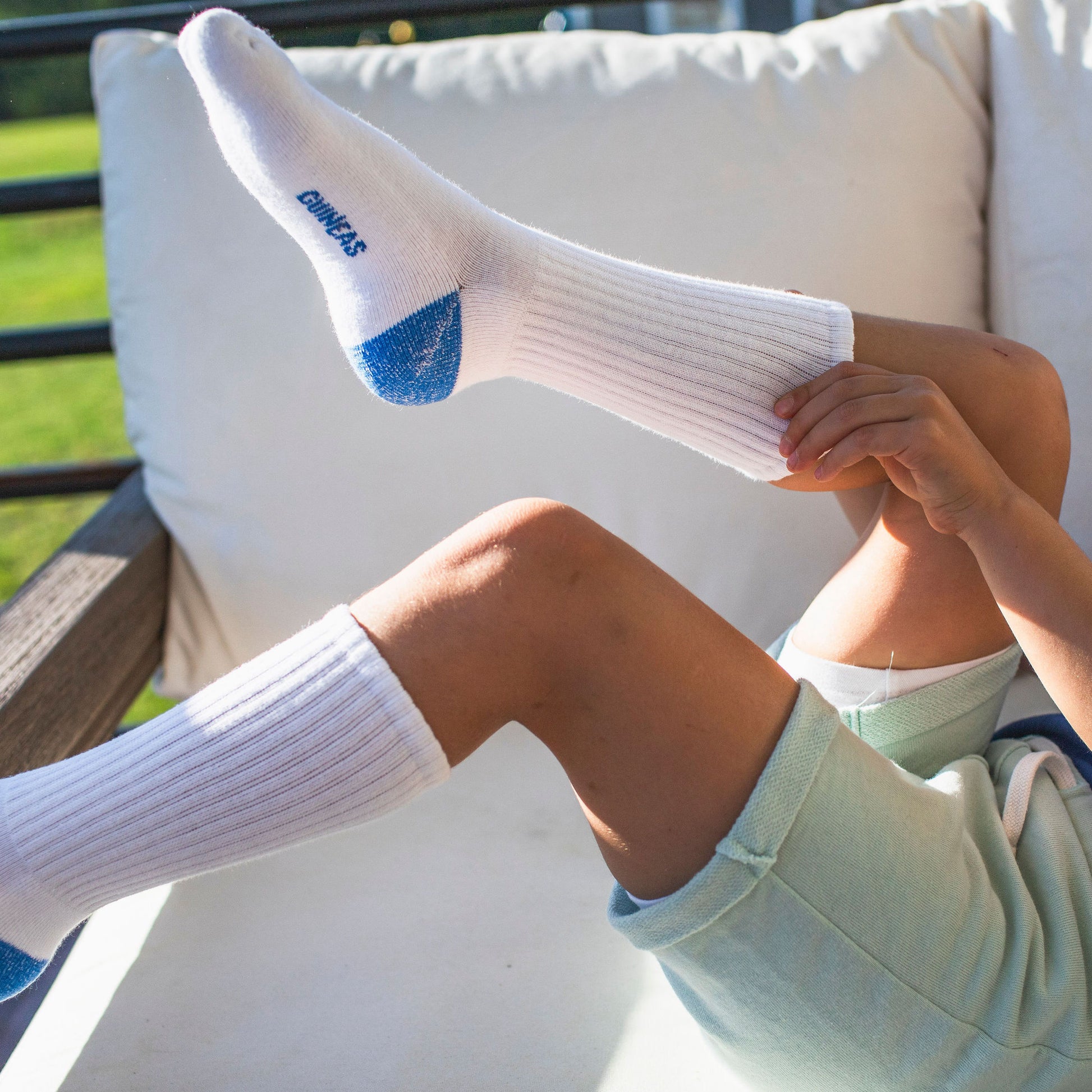
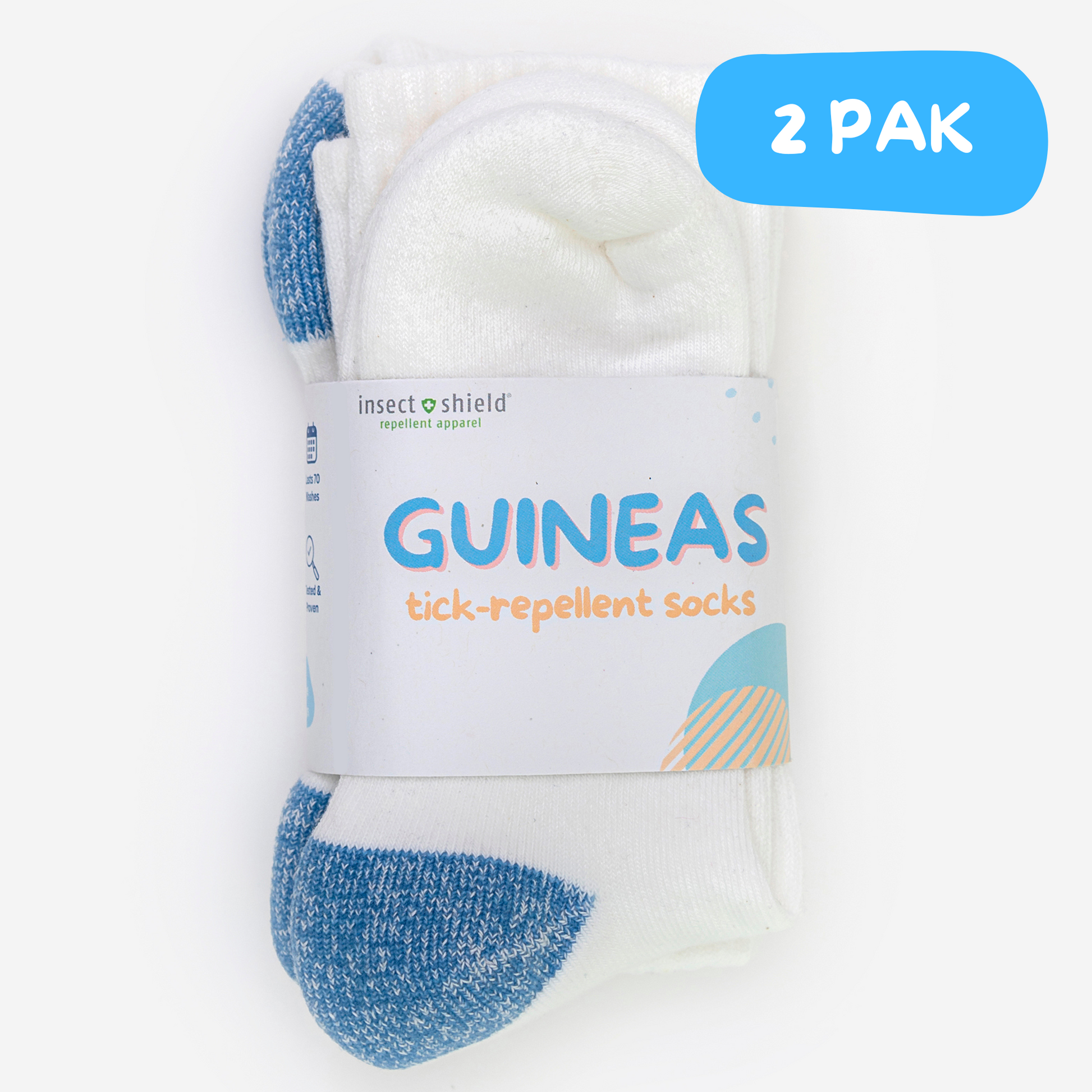
Made with Insect Shield® Technology
Tick-Repellent Socks: 2-Pak
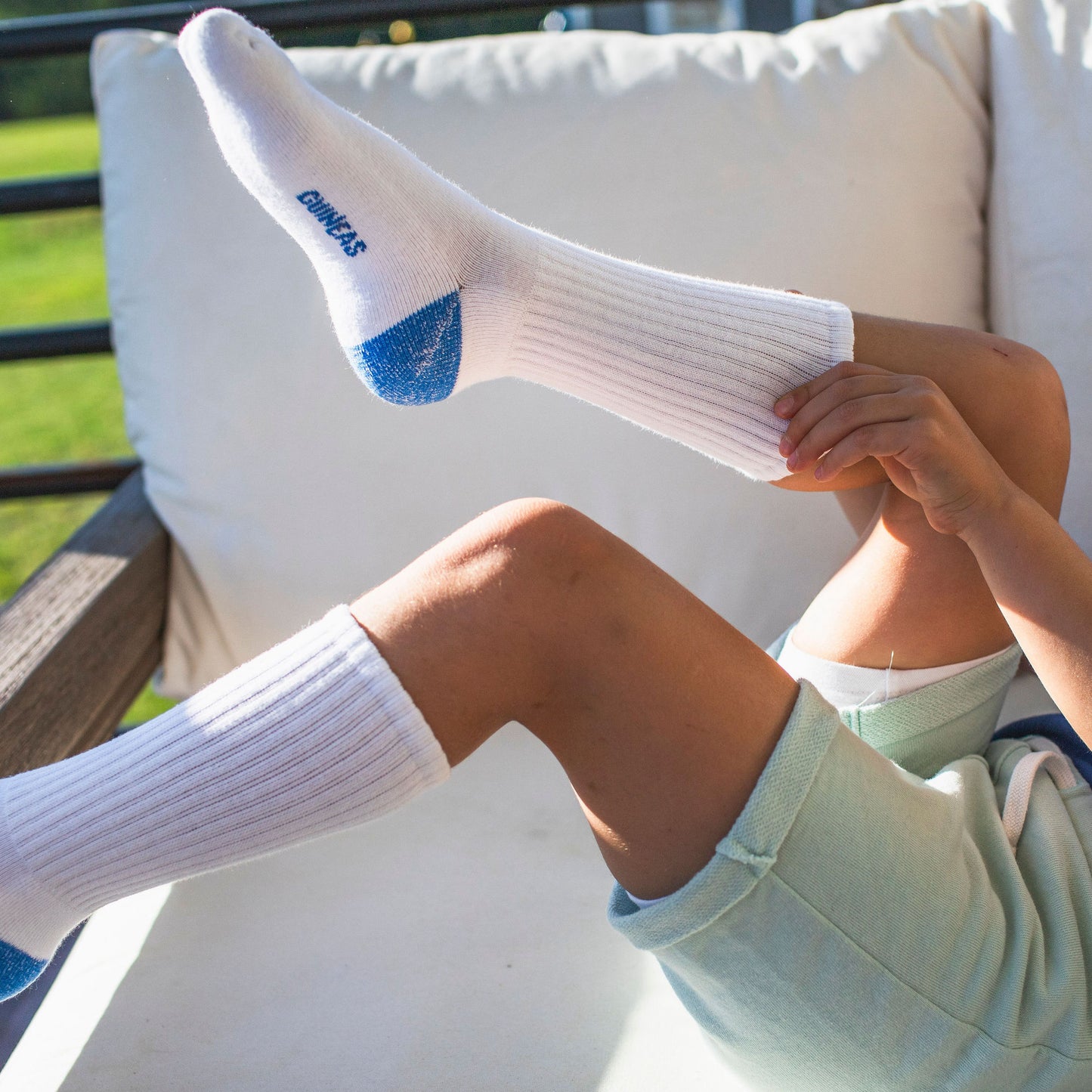
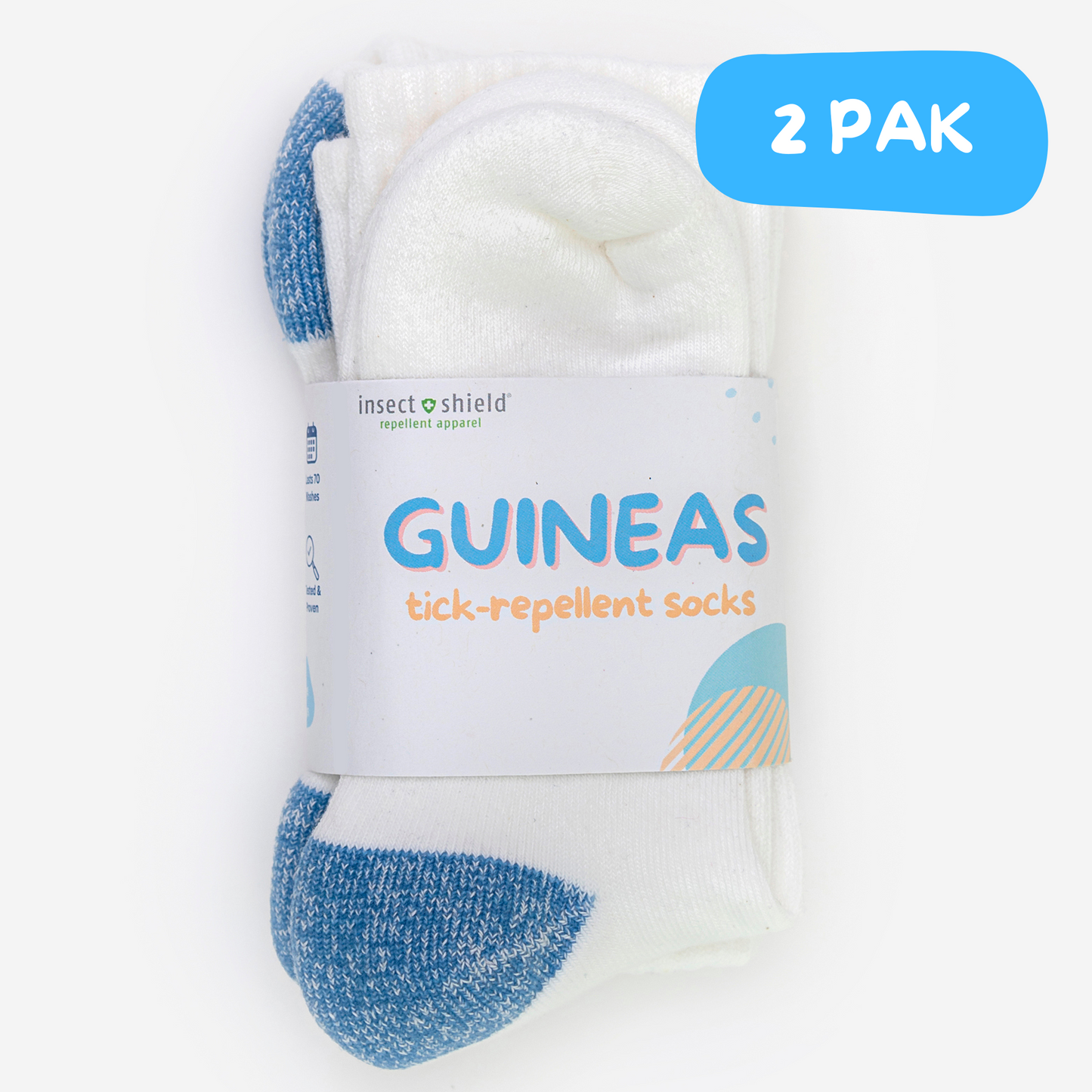
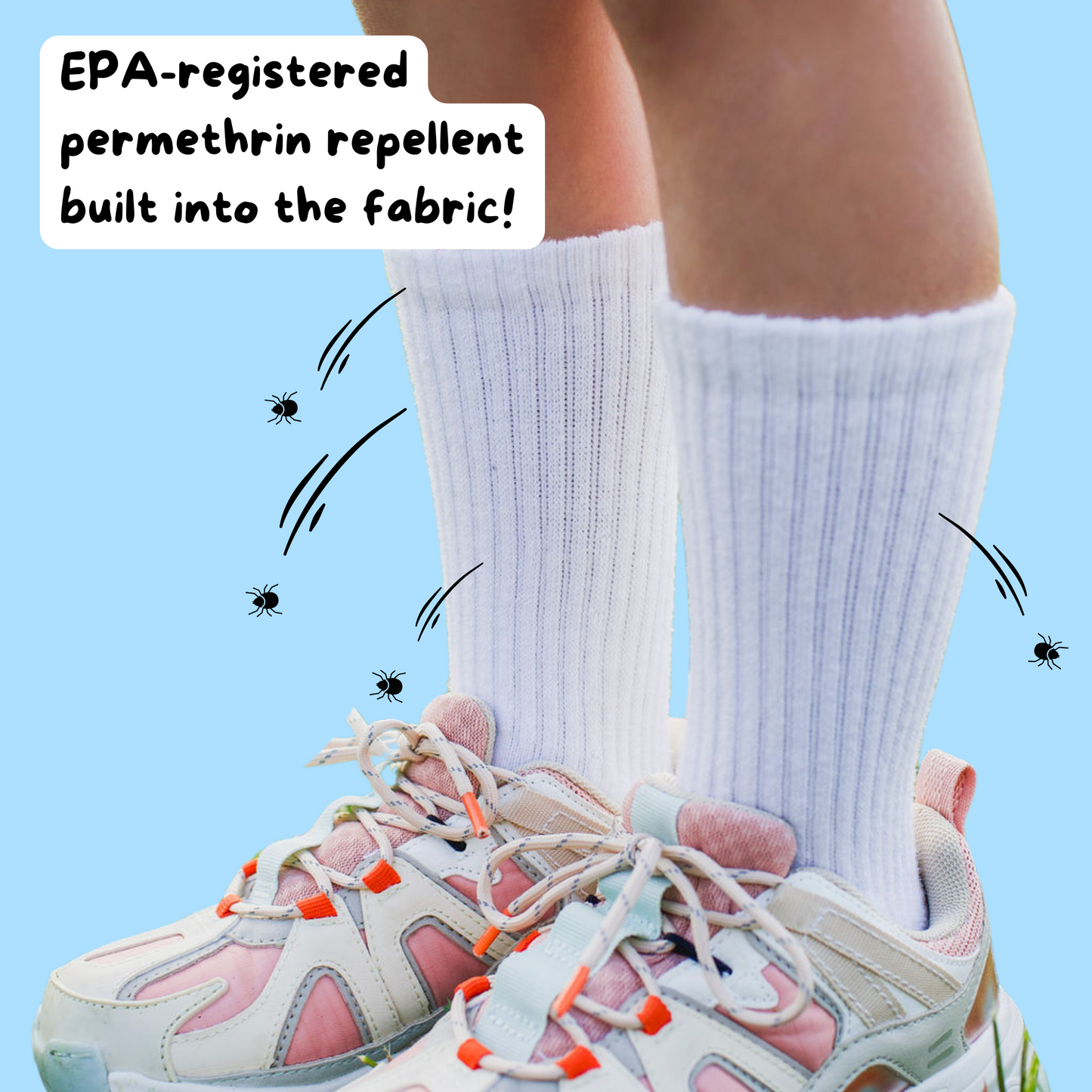
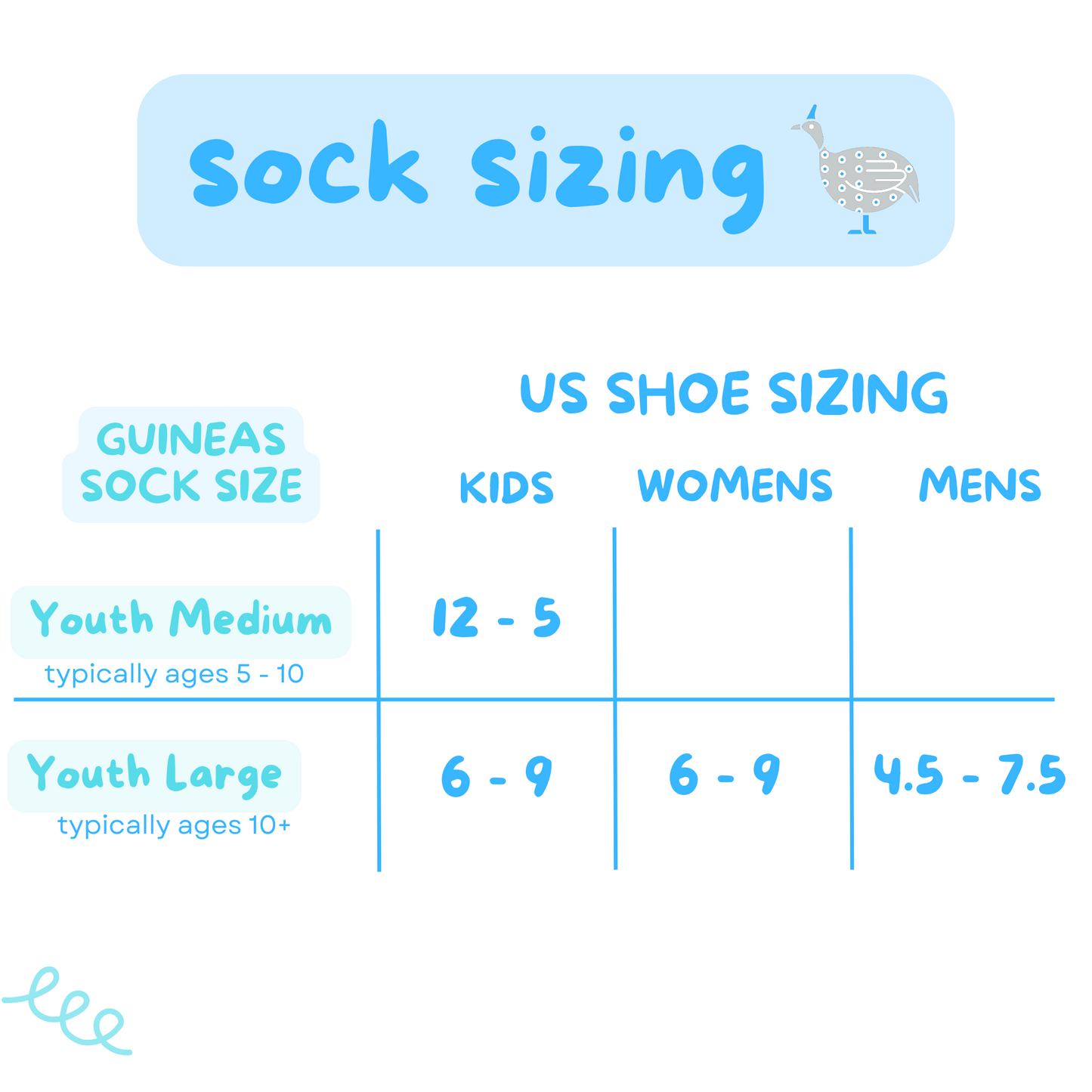
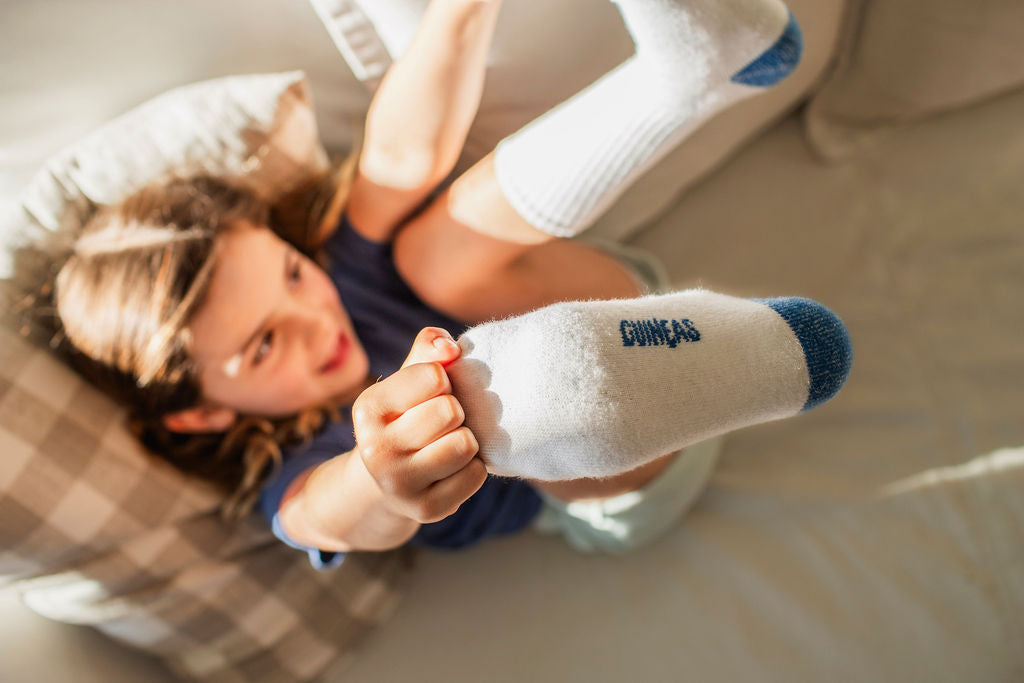
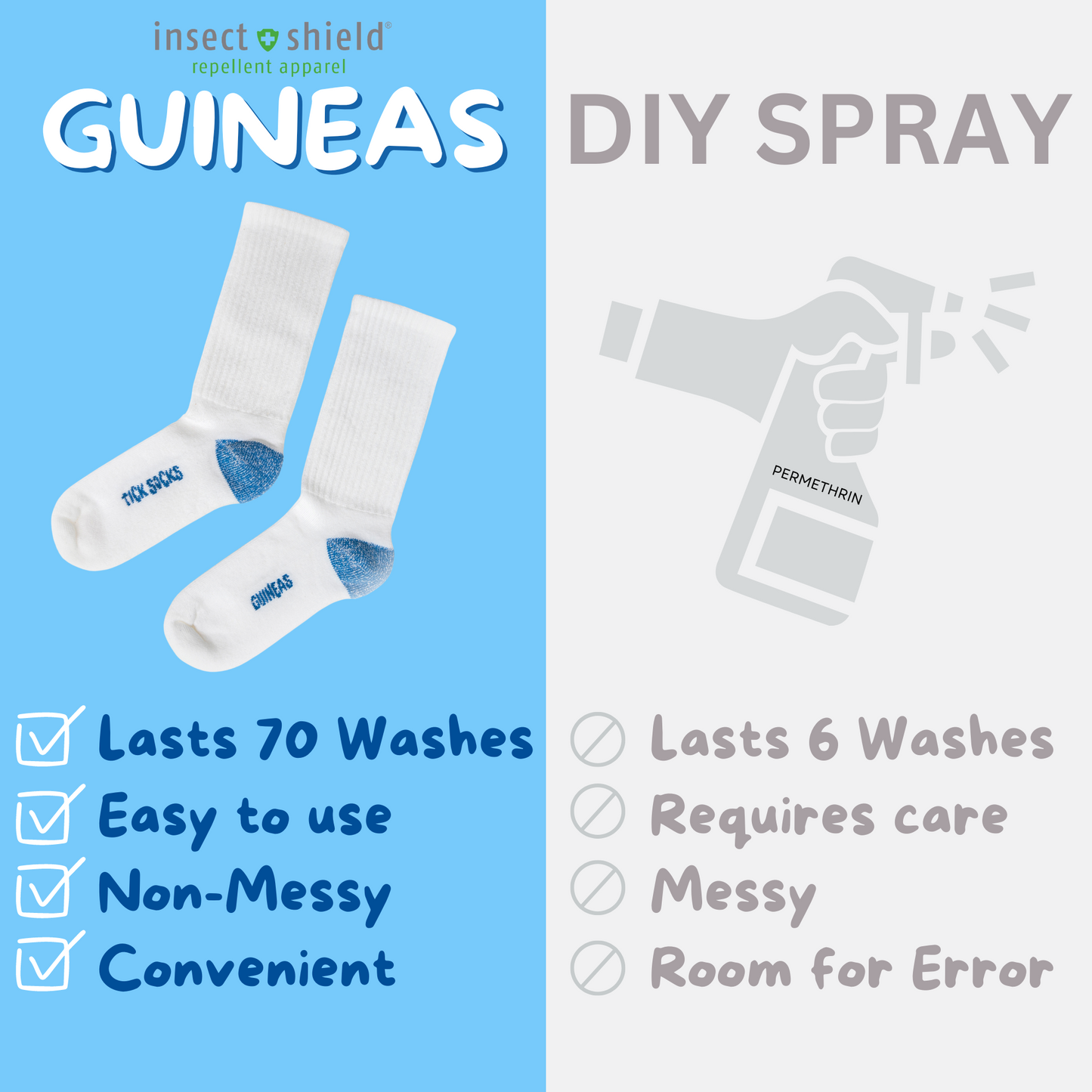

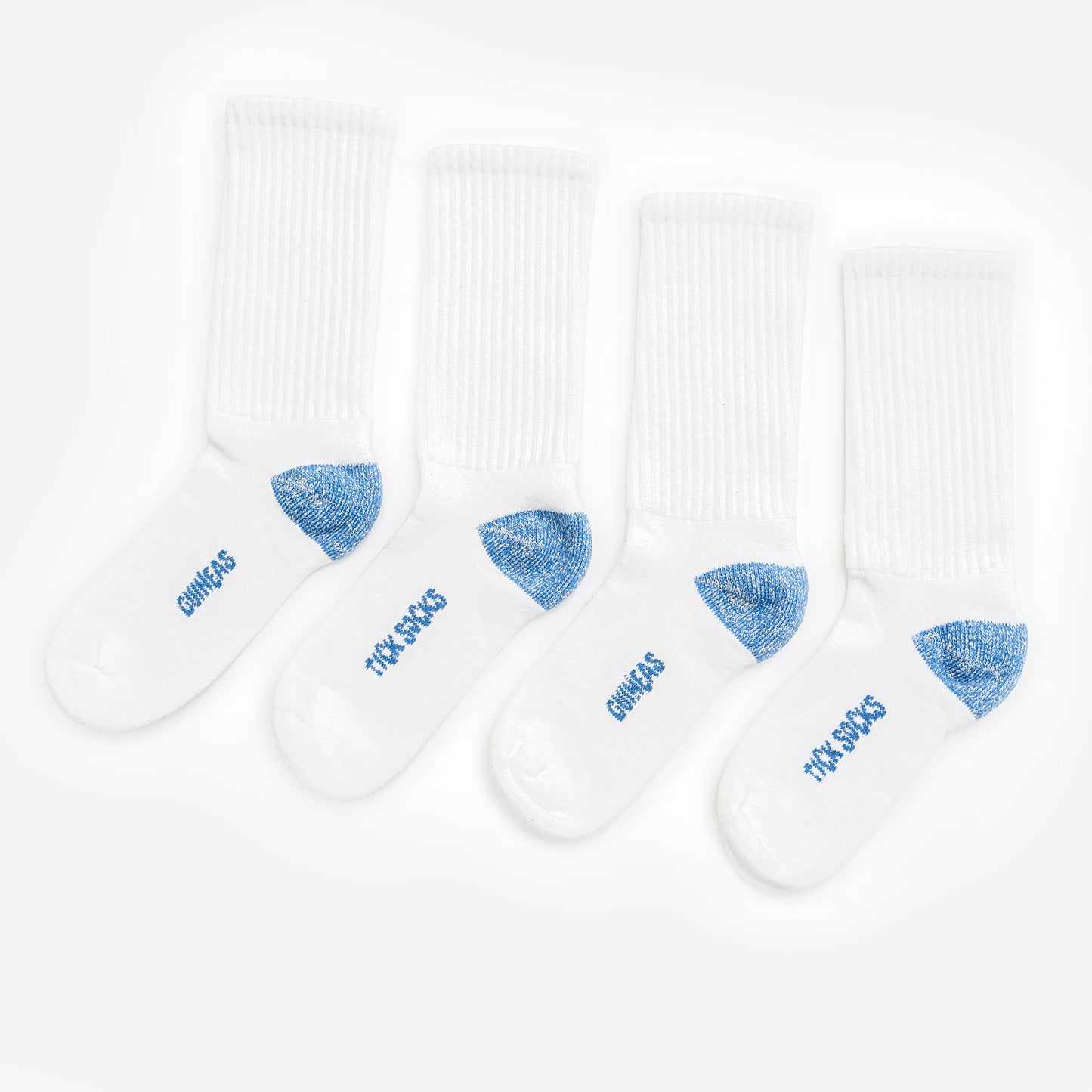
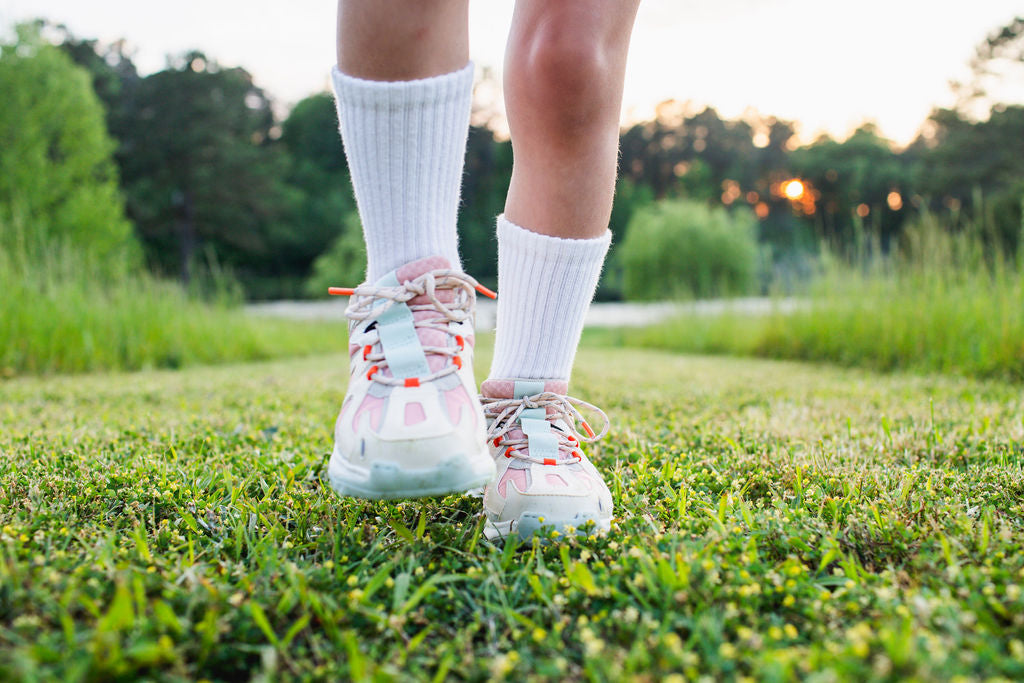

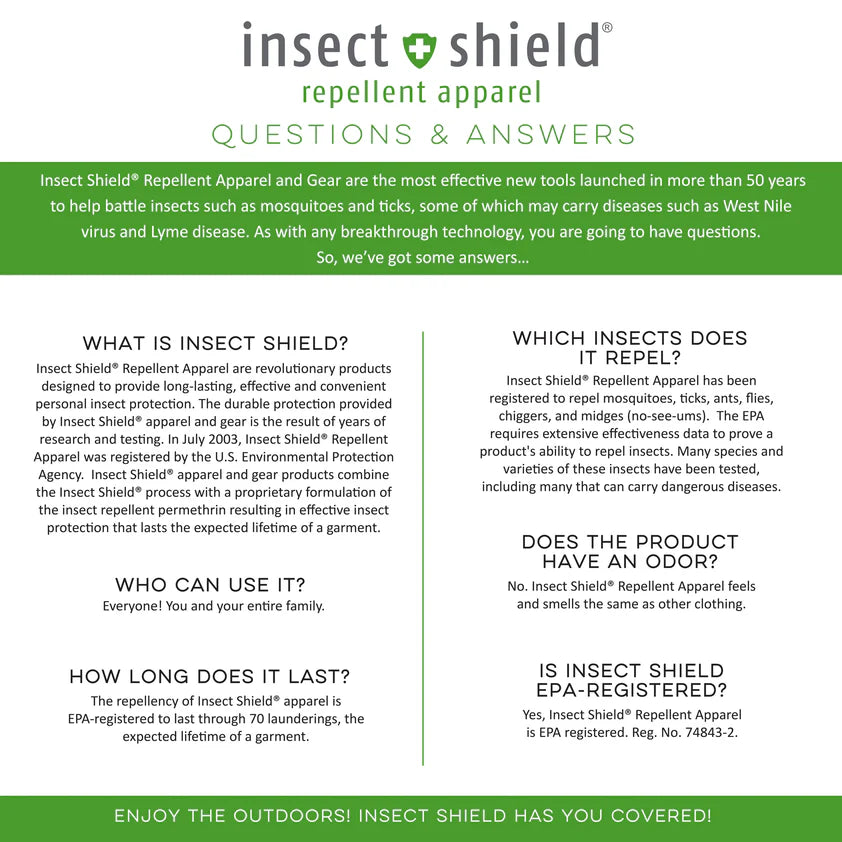

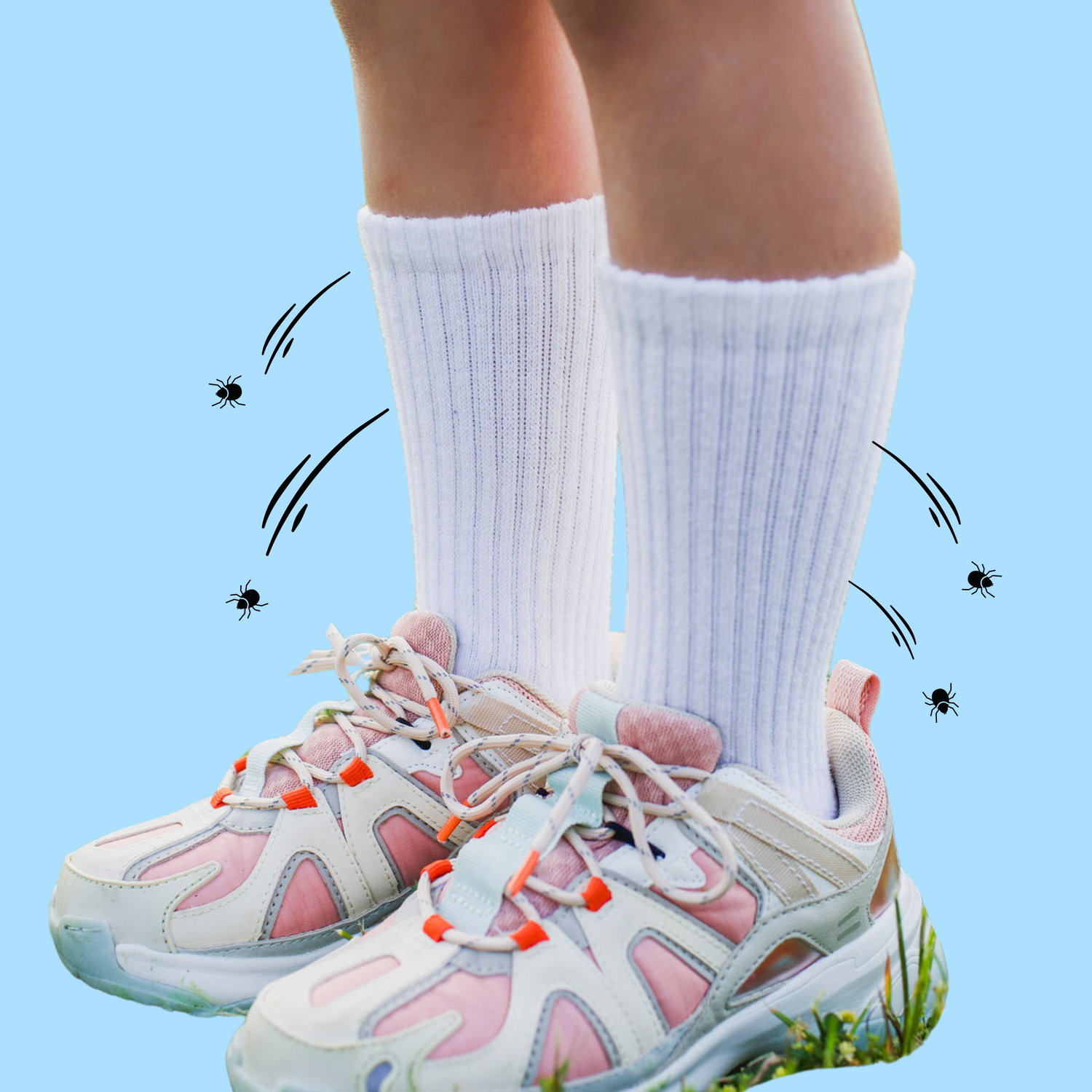
Adios, Ticks
Tested & Proven
Our EPA-Registered socks are approved for use by the whole family, ages 0+. Treated with Insect Shield permethrin technology, our socks will keep the ticks from crawling up, so you can focus on enjoying the outdoors.

NON-MESSY
Invisible & Odorless
The repellent technology is tightly bonded to the fabric fibers, resulting in a odorless tick repellent solution that is easy for kids to quickly slip on and off. Stays on the fabric, not on your skin.

GET CAMP READY
Peace of Mind
Repellency lasts up to 70 washes, which means you'll be tick-free all summer long.
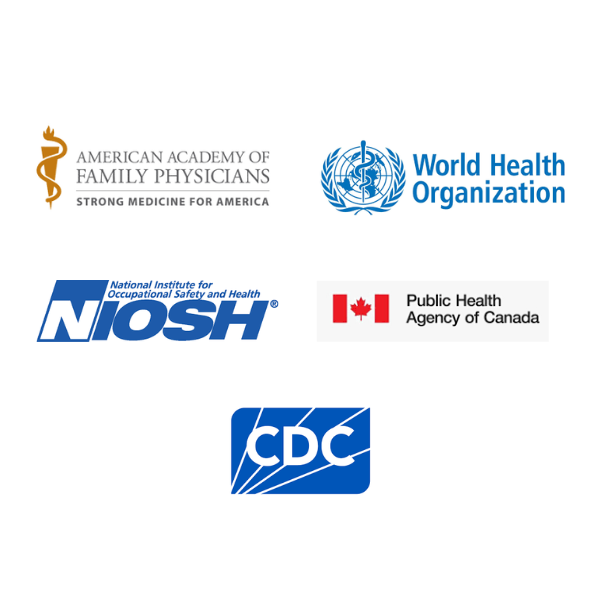
Who recommends permethrin-treated clothing?
In addition to doctors, epidemiologists, and outdoor enthusiasts, the following international agencies recommend permethrin-treated clothing:
- The American Academy of Family Physicians
- The U.S. Centers for Disease Control and Prevention (CDC)
- The World Health Organization (WHO)
- National Institute for Occupational Health and Safety
- The Public Health Agency of Canada
Frequently Asked Questions
Is Permethrin safe?
We partner with Insect Shied to treat our clothing. They are leaders in the insect repellent market, with decades of experience. Insect Shield’s permethrin-treated clothing received the first-ever EPA safety rating of Category IV, which is considered “most favorable” or the highest safety level awarded. To receive its EPA registration, Insect Shield’s permethrin technology was extensively tested, confirming no adverse effects on people, animals, or the environment. This means that there are no restrictions and the entire family can use our permethrin-treated clothing.
Additionally, the Hohenstein Institute, an accredited test laboratory and research institute, has performed extensive allergy and skin sensitivity tests. Insect Shield-treated apparel was awarded both “Hypoallergenic” and “No Allergy Potential” labels.
Insect Shield also commissions its own third-party studies on the efficacy and reliability of its products. Through various outside research efforts, they continue to meticulously monitor the chemistry, application, and final product.
The advantages of Insect Shield permethrin-treated clothing are numerous. Unlike topical repellents, Insect Shield will not come off when you sweat, does not absorb into your skin, cannot be swallowed, is not harmful to eyes, and cannot be inhaled. There is no potential for overuse. The advantage is invisible, long-lasting, and convenient insect protection that benefits the entire family.
How should I wash my Guineas socks?
Normal home laundering is recommended. The socks can be bleached, starched, pressed, etc., without effect on the repellent quality; however, they should not be dry cleaned. Dry cleaning removes some of the active ingredient from the apparel, which reduces the insect repellent quality.
Are Guineas socks considered an EPA-registered repellent?
Yes! Guineas clothing is treated by our partners at Insect Shield. They are registered under EPA Reg. No. 74843-2.
What does the EPA registration mean?
The EPA registration process evaluates a proposed product to make sure it will not have harmful effects on people or the environment. Insect Shield repellent is EPA approved for use by the whole family, with no restrictions.
The application process and the final consumer product have all been rigorously evaluated. Insect Shield Repellent Apparel was registered by the U.S. Environmental Protection Agency in 2003.
Who recommends permethrin-treated clothing?
In addition to doctors, epidemiologists, and outdoor enthusiasts, the following international agencies recommend permethrin-treated clothing:
- The U.S. Centers for Disease Control and Prevention (CDC)
- The World Health Organization (WHO)
- National Institute for Occupational Health and Safety (NIOSH)
- The American Academy of Family Physicians
- The Public Health Agency of Canada
All of the above agencies actively encourage at-risk individuals to use permethrin-treated clothing as a protective measure against insect-borne diseases.
Which insects do your socks repel?
Our socks are registered to repel ticks, mosquitoes, ants, flies, chiggers, and midges (no-see-ums).
I've heard permethrin can be toxic to cats. Can they be around treated clothing?
While permethrin has been known to be harmful to cats in liquid form, the repellency is so tightly bound to the fabric fibers, and in such minimal amounts, that it does not pose a risk to cats.
